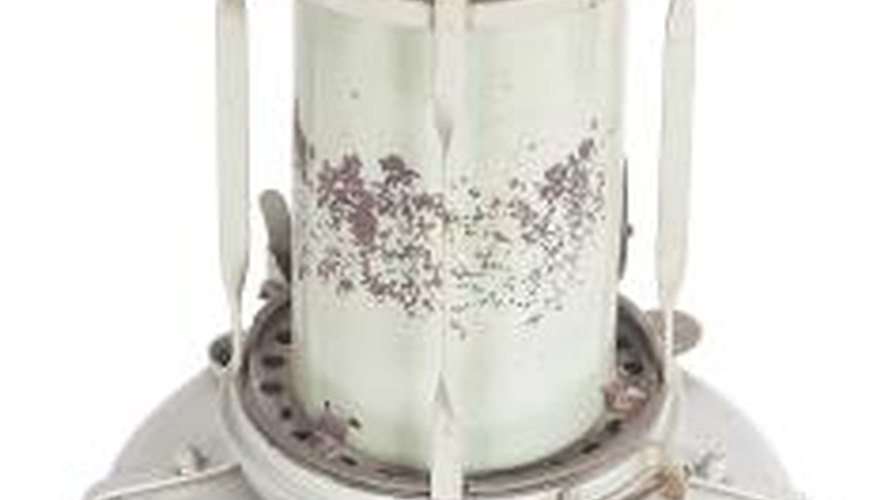Using an alternative heating option, such as a kerosene heater, can reduce your utility bills while still providing the warmth you desire. Kerosene heaters are available in a variety of sizes, and, with proper care, will last for years. Like other heating elements, kerosene heaters have pluses and minuses. A downside to kerosene heaters is their ability to produce soot. Fortunately, there are a few things you can do to reduce the soot output of a kerosene heater.
If the soot appears directly after ignition, tap the chimney unit of the kerosene heater to make sure it is seated properly. Soot typically is caused by the heater's chimney not being positioned correctly. A bright orange flame burning on only one side of the wick is a sign that the chimney is not seated right.
- Using an alternative heating option, such as a kerosene heater, can reduce your utility bills while still providing the warmth you desire.
- If the soot appears directly after ignition, tap the chimney unit of the kerosene heater to make sure it is seated properly.
If soot begins to appear 10 to 15 minutes after ignition, the wick is set too high. Turn the wick height knob to lower the wick. Lowering it will stop the kerosene heater from producing soot.
Use high-quality, odourless kerosene. Cheaper, low-quality kerosene will cause your heater to create odour, smoke and soot.
TIP
Follow all directions and warnings for your specific brand of kerosene heater.
WARNING
Kerosene heaters pose particular potential dangers, including burns, fire or explosions and carbon monoxide poisoning or asphyxiation. Heed all manufacturer safety instructions and precautions. It is illegal to use kerosene heaters for indoor heating in some states. Never use gasoline as fuel for a kerosene heater.
